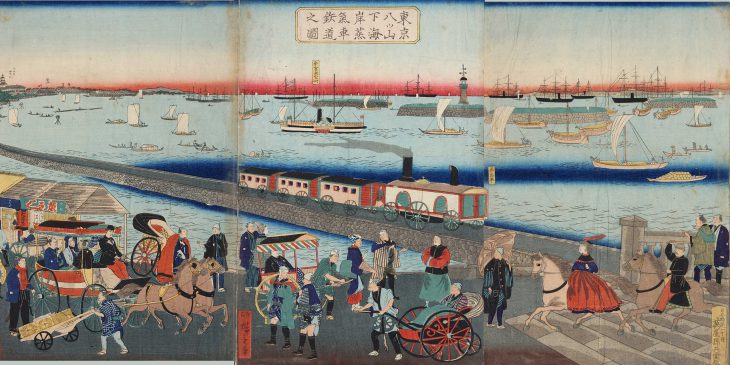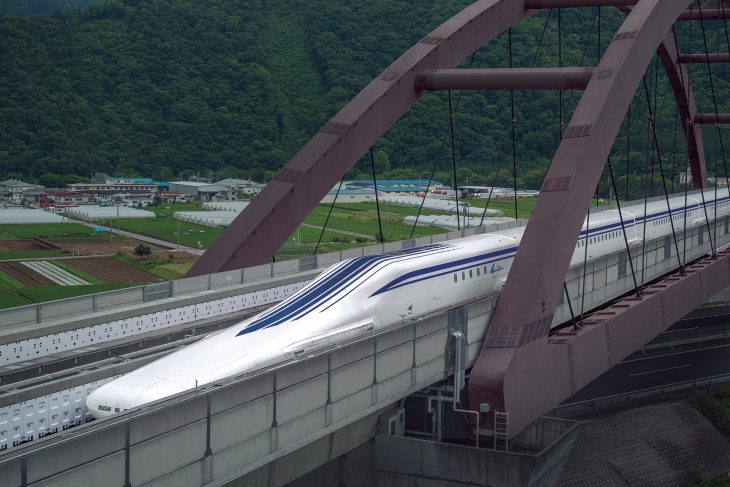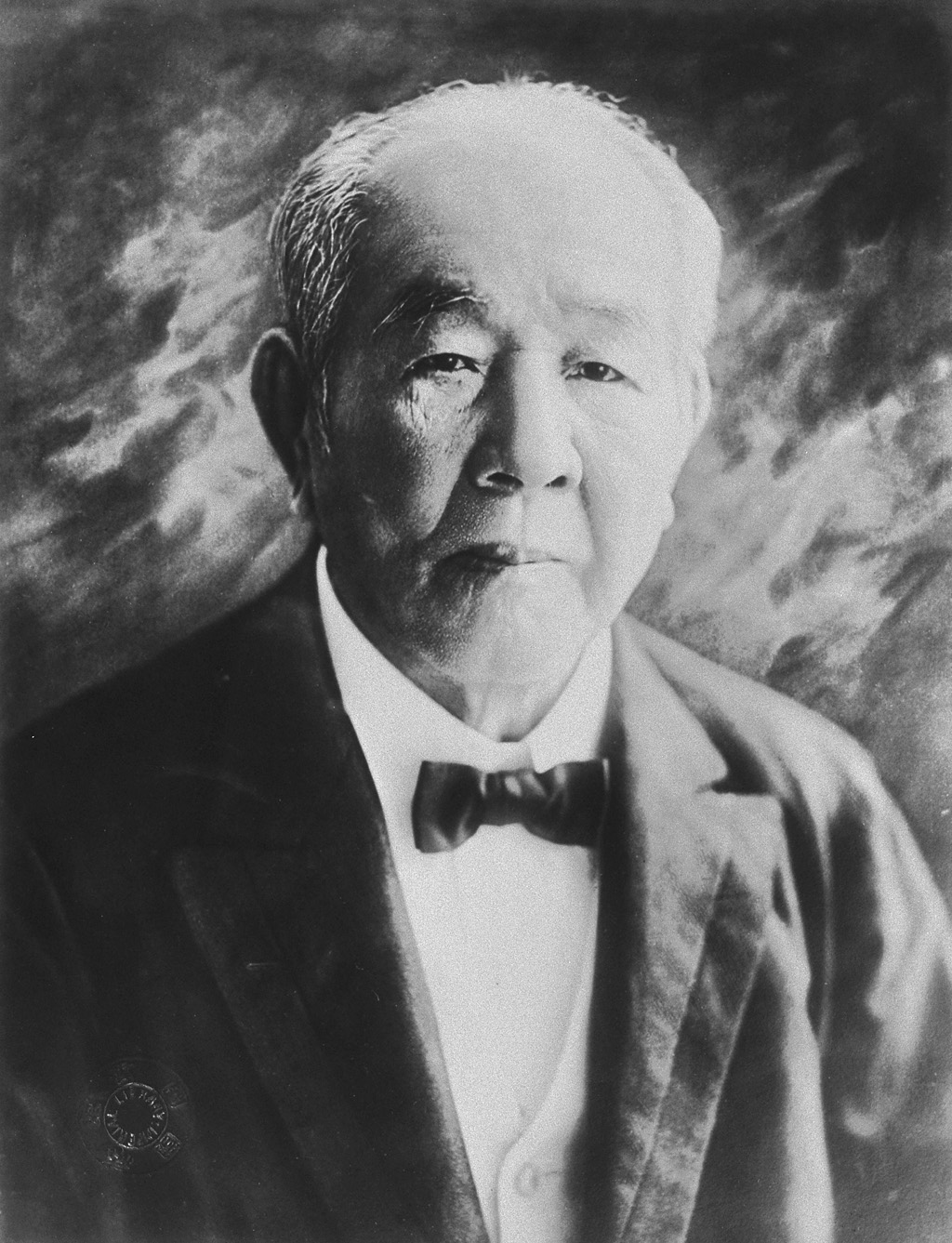Meiji 150: From Steam to MagLev
Underpinning the modernization of Japanese industry were its railways.
Work started on Japan’s railways during the Meiji period (1868–1912), with the help of the British. While playing a supporting role in industrial development, the railways developed chiefly around passenger transport. These days, Japan has started to export railway technology, and is contributing to the development of railways in other countries, including the UK, the birthplace of rail travel.
24.598 billion. That’s the number of people who used railways across Japan in fiscal 2016, accounting for roughly 40% of all rail travel worldwide. With 214 operators covering a total distance of approximately 28,120 kilometers, the Japanese rail network provides support for passengers traveling around metropolitan areas, from major cities out to the suburbs, and between cities. With most of the country’s population concentrated in its cities, that is where there are most rail services, providing safe and reliable services that play a crucial role in people’s everyday lives and economic activities.
The first railway in Japan was opened in 1872, covering a distance of around 29 kilometers from Shimbashi Station in Tokyo to Yokohama Station in Kanagawa Prefecture (now Sakuragicho Station). The railway was revolutionary, condensing a journey that would have taken around ten hours on foot, or three to four hours by steamboat, into just 53 minutes. The average number of passengers the following year, in 1873, was 4,347 a day. In the beginning, every aspect of Japan’s railways, from the locomotives to engine drivers and service planning, was dependent on the UK.
The Meiji government’s plans to develop railways didn’t necessarily go smoothly, due to a lack of funding. Nonetheless, with railways opening in 1880 in Hokkaido, and 1877 in the Kansai region (Kobe to Kyoto), followed by the Tokaido Main Line (Shimbashi to Kobe) and services in Kyushu (part of the Kagoshima Main Line) in 1889, and the full length of the Tohoku Line in 1891, the rail network gradually spread out across the entire country.
Rail travel was first introduced to Japan in 1853, in the form of a model steam locomotive that arrived on a Russian ship sailing into Nagasaki. Having witnessed this, a group of engineers from Seirenkata in Saga, Kyushu, began carrying out research. They finished work on their own small model steam locomotive in 1855. With Seirenkata established as a seat of western learning, they went on to research and develop technology such as artillery, medication, explosives and the telegraph.
There were around 275 han domains in Japan during the Edo period (1603–1867). By the end of the period, most domains had their own hanko schools, chiefly to provide education for the children of feudal lords. The emphasis however was not on educating human resources for the development of each domain, or to support local industry and commerce. In addition to national schools and hanko, some domains also provided education in areas such as medicine, chemistry and physics. Saga was one such domain. Although hanko schools were abolished in 1872, many went on to become higher education institutions that still exist today, and played a key role in developing human resources during the Meiji period.

Guido Verbeck (center) with students at the Saga domain’s hanko school, Chienkan, in Nagasaki, PUBLIC DOMAIN
With all this going on in the background, Japanese people began to take on board technologies from foreign nationals in their employment. The first Japanese engine driver was appointed in 1879, and the Osakayama Tunnel between Kyoto and Otsu (664.8 m) was completed entirely by Japanese engineers in 1890. They had picked up brick-making technology from British engineers, and had completed this difficult undertaking by adapting castle fortification techniques. In 1911, work was finished on the first 100% Japanese-made steam locomotive, bringing with it an end to reliance on imports. Advances in areas such as signal systems and electrification meanwhile helped lay the foundations for railways in Japan, and contributed to the country’s modernization and underlying economic development.
One of the key characteristics of Japan’s railways is the number of passengers. The development of the country’s expressway network led to a decline in rail freight transport, to the point where it only accounts for 5% of the national total at present. Viewed from another angle, you could say that there is spare capacity for rail freight. The Chuo Shinkansen superconducting maglev line between Tokyo and Nagoya is due to open in 2027. If that happens, it will again bring about a sea-change in terms of traffic networks and transport.
An outline comprehensive distribution policy (fiscal 2013–2017) approved by the cabinet in 2013, and a subsequent outline (2017–2020) approved in 2017, include plans to promote modal shift, moving towards environmentally friendly sea and rail networks with mass transportation capabilities. In the interests of tackling global warming and other environmental issues, the government has set out a direction with a clear emphasis on improving the basic transport infrastructure that underpins economic activity and people’s everyday lives.
Japan is reliant on the safe and reliable railways it has built up since the Meiji period to a large extent. Equally, the railways are a key industry in terms of Japan’s international contribution and its export industry.
Reprint from “Feature Story: The New Age of Inclusion and Pioneering Leadership,” The Japan Journal, March/April 2018 (Vol. 14 No. 6), pp. 5-7.
Keywords
- Meiji Restoration
- Meiji 150
- Tokaido
- hanko school
- Shinkansen
- Chuo Shinkansen
- maglev





